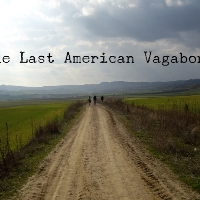International Public Notice: You Ask How Did She Know?
By Anna Von Reitz
I ran across this film clip of Ayn Rand, the Author of Atlas Shrugged, and the young man asking --- how did she know this in 1959? The same way we know it in 2024. She looked. She saw.
Please note the young Mike Wallace, too, trolling the media line and the socialist mindset.
Please also be aware that this interview is taking place eighteen (18) years after the money had been put in place as of 1941, to pay for all the expenses of the governments --- all social programs, all infrastructure --- in every country worldwide, so there was no need or reason to tax anyone, except that in the meantime, the Vermin had started another World War.
So the Generals stole the money intended to be an endowment covering all government expenses and doing away with any need for taxation. They commandeered it under the Marshall Plan and various other initiatives and slush funds. They used it to rebuild all the damage that they had caused and to buy entire governments and economic sectors in countries all over the world.
They are still trying to steal and control and contrive to keep hold of money meant to free you all from taxation forever.
They have tried to deny its existence.
Then they have tried to pretend that they don't know whose money it is.
Then they have tried to pretend that it came from criminal sources.
Then they have tried to pretend that it came from a man who is a slave in their three-tiered slave system.
And none of this is true. They know and we know exactly where that money came from and what it is supposed to do.
It is supposed to forever end taxation.
It is supposed to provide everything everyone needs in terms of government services and infrastructure without taxing people.
But taxation is a power to destroy that can be used to coerce and bully and terrify and the slimebags don't want to give it up.
They don't want to honor the wishes of the people who actually produced the wealth in the first place.
No, they want to use it to buy people off and create more conflicts and more oppression and more ways to kill people, because that is how twisted, small-minded, crooked, and grasping these men really are.
Here is Ayn Rand telling you the truth about taxation -- but she told people a lot more than this.
She explained how the Generals used this money to buy controlling interests in all the Fortune 500 Companies, how they gobbled up entire market sectors, how they turned the stock market into a rigged casino, how they terrorized the captains of industry, how they stole and coerced and still do.
Atlas Shrugged is really the simple truth presented as a fictional story. It was the only way that Ayn Rand could get the truth to you. This is what she personally witnessed in the 1930's, 40's and 50's.
Like the Wizard of Oz and The Lord of the Rings, Atlas Shrugged is a form of disclosure that exposes one whole segment of the destruction of our world at the hands of crooked generals and government bureaucrats --- the take over of our productive private sector corporations and inevitably, the death of our industrial base.
Don't wonder how she knew. Wonder why you didn't.
https://www.youtube.com/shorts/icHlMUuE5lM
The recent lesson in economics given to the members of the World Economic Forum by the President of Argentina is a lesson that Argentina, Russia, China, and every other Socialist -Communist- Fascist country has learned.
These failed socialist political theories have led to poverty and social misery every time and everywhere they have been adopted. No exceptions.
If we let the criminals get away with it, they will force these failed ideas onto us and we will be a Third World country; indeed, to the extent that the colluding generals have succeeded, we already are.
Look at American Standardized Test Scores since Jimmy Carter's Federal Department of Education came into existence in 1976.
Look at our standard of living plummeting.
Look at the value of the Federal Reserve Notes being eaten up like bon-bons by engineered inflation.
Look at America, once loved and respected, being trashed and hated.
Look at what these political parties and lobbyists have done to this country and ask yourselves, why aren't these special interest groups outlawed?
Why are corporations able to give almost unlimited amounts of money to political candidates so as to literally buy the government?
Until the rest of the world recognizes that this thing occupying the Federal Capitol isn't our American Government, that it is the usurping Roman Catholic Municipal "United States, Inc." and the usurping British Territorial "United States of America, Inc." that they are dealing with, the entire world will suffer.
Likewise, until the world recognizes the difference between the United Nations organization and the UN CORPORATION, there will be no peace, no honesty, no safety for anyone.
These evil corporate conglomerates will continue to promote war, war, and more war for profit and the corrupt generals will continue to evade and abuse civilian authority, until the banks are cut off at the knees for funding them and hiding their dirt.
And this is what Ayn Rand knew, too.
What we are telling you is nothing new; we are simply putting it together in a different way, and shoving it in your faces until you must choke on it.
In case you missed it, be sure to catch this similarly insightful summation of what happens when for-profit corporations masquerade as governments.
They kill people and terrorize them for profit.
Literally.
To them, it's just another kind of war.
To them, it's just another "theater".
To them, it's all for fun -- until they are caught.
https://www.brighteon.com/26365e0a-347e-4b82-930c-9590a686aada
Pay special attention to all the captured film footage of the crazy hospital, nurse, and death/ demon display that was actually part of the London Olympics years prior to the so-called pandemic.
These are the enemies of mankind, right here on public display, in our faces, dramatizing how they intended to kill us and our children and our elders. And did so, too, using their "Uniformed Officers" -- the licensed Health Professionals, who took the kickbacks and injected everyone with poisons and parasites and experimental gunk.
Don't forget and don't forgive the corporations and the men and women who did this.
They killed indiscriminately. They killed young and old, rich and poor, black and white. They killed for the sake of profit and cashed out the "Life Force Value Annuities" they took out on our lives, in a bizarre reprise of the Bottomry Bonds Scandal.
So it is time to "kill" them. Yank their charters and contracts. Sever their licenses. Remove the corporate veil. Void their registrations, copyrights, and patents. Boycott them. And don't believe a word of their narratives. Don't support them in any way. Treat them as you would a plague of rats.
Quit working for them. Join organizations that will put an end to them once and for all.
Explain to everyone why this is the right, proper, and lawful response.
Issued by:
Anna Maria Riezinger, Fiduciary
The United States of America
In care of: Box 520994
Big Lake, Alaska 99652















